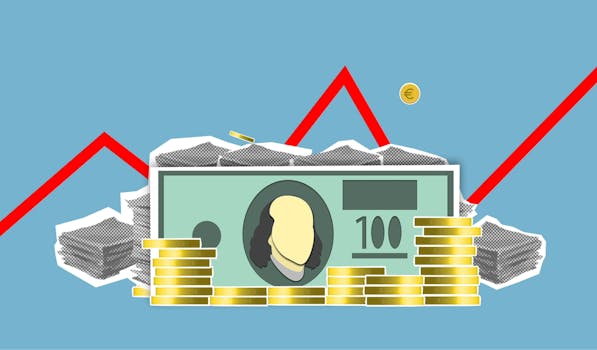Hands get sweaty, the heart runs fast, and before you know it, emotional decisions sneak into your investment choices. This scenario probably feels familiar and isn’t rare.
Managing investments without letting feelings run the show matters to growing wealth, preserving capital, and lowering regret. Emotional decisions can quickly unravel a carefully built plan.
Learning to spot and sidestep emotional decisions gives you better control, sharper reasoning, and steadier returns. Dive in for clear approaches anyone can follow.
Structure Daily Habits to Steer Clear of Emotional Triggers
Setting up routines helps remove guesswork during market swings, so you won’t fall into emotional decisions after a surprising headline.
Simple procedures, like reviewing holdings only at set intervals, provide natural buffers against rash, emotionally charged choices.
Recognizing Trigger Patterns Before Markets Move
Track personal responses during market shakeups by keeping notes and marking moments when emotional decisions seem likely.
For example, highlight if you check the news more or refresh prices rapidly when certain stocks drop or spike.
Use this log to plan specific, repeatable responses—maybe stepping back before acting or calling a trusted friend to discuss options first.
Creating Your Personal Decision Checklist
Write a checklist to guide logical review, such as “Has my investment goal changed? Is this a reaction or a plan adjustment?”
Read this checklist aloud before selling or buying, keeping focus on reasons instead of gut feelings in the heat of the moment.
Over time, attaching every major decision to a checklist review curbs emotional decisions and builds discipline for the long haul.
| Situation | Emotional Response | Best Practice | Next Action |
|---|---|---|---|
| Market drops 7% | Anxiety, urge to sell quickly | Pause, review plan checklist | Wait 24 hours before changing anything |
| News of IPO success | Excitement, fear of missing out | Assess risk to your strategy | Set aside funds, avoid unplanned moves |
| Friend’s advice | Pressure to follow their lead | Analyze facts, not emotions | Compare with your own process |
| Unexpected windfall | Joy, impulse to splurge or speculate | Review goals and time frames | Consult plan before investing |
| Market hits all-time high | Euphoria, desire to buy more | Rebalance into target allocation | Do not chase performance |
Stick to Predefined Rules When Under Stress
Formal rules, made in calm periods, override emotional decisions when investments swing sharply. They anchor actions during excitement or panic.
These rules remove room for negotiation with your feelings during stressful episodes, making emotional decisions less likely.
Committing to Automatic Rebalancing Platforms
Enroll in automatic rebalancing systems, whether through your broker or app, so all shifts stay aligned with your original asset plan automatically.
When the market fluctuates wildly, these setups execute changes without letting emotional decisions influence your portfolio structure in the moment.
- Set portfolio risk tolerance targets to define limits for equity and bond proportions in advance; this maintains risk exposure and limits surprises during downturns.
- Use automatic purchase or sale triggers to ensure investments adjust without delay, so you don’t second-guess when stress peaks or headlines scare you.
- Create stop-loss or take-profit orders that activate without human intervention, so you aren’t racing to make decisions fueled by emotion.
- Designate calendar dates for reviews and ignore price alerts in between; your focus stays on the process, not daily headlines that tempt emotional decisions.
- Keep an “in case of crisis” written script: “Only act if rules are met; do not make unscheduled changes now. Review my checklist before every major portfolio move.”
Persistent adherence to rules develops strong habits, reducing the risk of emotional decisions taking over at the wrong moment.
Defining Clear Exit and Entry Points in Advance
Establish buy or sell points before entering any investment. Decide what conditions warrant a change and write them down.
Refer back to these levels so emotions don’t drive actions; adjustments happen only when your stated criteria are met, not when instincts scream for reaction.
- Write price targets and reason for each purchase; revisit only if the investment thesis changes, not just on swings that spark worry.
- Use trailing stops so your system locks gains and reduces losses automatically, removing emotional decisions from the exit process.
- Attach reminders to each holding, stating “Sell only if price falls 15% from peak, or business changes dramatically,” to avoid knee-jerk sales.
- Track reasons for historical trades. Review if emotional decisions have led to regret, and use patterns to inform better habits in the future.
- Review all planned changes with a second person or advisor for accountability, not just personal comfort or anxiety relief.
Action-based setups lower stress and the frequency of emotional decisions by shifting the focus to following plans instead of feelings.
Connect Long-Term Goals to Daily Choices
Tying short-term reactions to long-term objectives steers actions away from impulsive, emotional decisions that could harm your future plans.
Visualizing goals regularly, and revisiting them during stressful times, reminds you to serve the bigger picture before acting.
Walking Through a Real-World Example
Imagine Jessie, who invests for retirement over 20 years. When the market falls 8%, Jessie feels panic and thinks, “I should sell everything!”
But Jessie reads her investment plan and recalls: the big goal is 20 years away, not tomorrow, so the best next step is to do nothing now.
Jessie writes down, “I acted on my goal, not on fear,” using this as a tool to reflect and avoid emotional decisions in the future.
Building a Visual Representation of Progress
Put up a chart on the fridge showing where you stand with your goals. Each time a market swing occurs, mark progress, not just value changes.
Seeing a growing line toward a target grounds you in purpose, reducing emotional decisions based on daily volatility alone.
This chart acts as a daily nudge to value discipline over reacting to temporary news flashes or dips.
Reframe Losses and Gains as Expected Parts of Investing
Viewing the ups and downs as normal reduces surprise and attaches less emotion to short-term losses or gains, shrinking emotional decisions over time.
Developing this mindset takes practice, but each repetition helps insulate you from impulsive actions that sabotage investing success.
Learning from Regret and Using It for Growth
If you’ve ever shouted, “Why did I sell that stock?” after it rebounds, channel frustration into progress, not blame or embarrassment.
Analyze what drove your emotional decisions—maybe impatience, stress, or a friend’s advice—so you can call it out next time.
List the lesson right after the feeling fades. Applying this insight builds stronger, less emotional investing habits every day.
Approaching Every Event as Temporary, Not Permanent
Use the analogy of waves on a beach: no single one lasts. Each is followed by another, which helps frame volatility as fleeting, not defining.
If a “down” day drives anxiety, contrast that with a long record of recoveries you’ve witnessed before. Memory cues help reinforce perspective.
Before acting, wait until tomorrow or the next scheduled review. One day’s emotion rarely matches the outcome weeks later.
Anticipate Biases and Distraction Before They Derail Plans
Bringing subconscious influences to the front, such as confirmation bias or herd mentality, lets you see how they fuel emotional decisions that hurt results.
Actively noting these patterns, and prepping for them, keeps investing on track regardless of market noise.
Calling Out Biases With Language
Stick “check for bias” sticky notes on your desk or browser—seeing the prompt before trades forces a mental pause to review motive.
Write down, “Am I buying because others are, or do I have a real reason?” Checking yourself out loud stops emotional decisions at their source.
Make this routine before changes, and it becomes automatic, leading to more logical steps.
Managing Information Overload
Set news limits so overwhelming headlines can’t cloud judgment. For example, decide to check financial news just twice weekly at scheduled times.
Clip, print, or bookmark only information that directly links to your goals and plan; ignore everything else to counter distractions and emotional decisions.
Check if the input signals align with planned criteria. If not, skip it and save energy for real decisions.
Apply Accountability to Investment Actions
Adding a neutral third party, or documenting every trade in a journal, keeps emotional decisions in check because actions face outside eyes or clear logic.
This habit infuses more discipline and highlights regret before it’s locked in with a transaction.
Creating Peer Checks and Written Logs
Before acting on a big change, tell a friend or advisor: “Here’s what I’m planning; does it fit my stated goals?” Listen to their feedback first.
Log every decision in a notebook with date, rationale, and feeling. Reviewing these entries trains you to spot emotional decisions from previous patterns.
Set calendar reminders for check-ins, so each discussion is timely and never forgotten, aligning intended behavior with actual actions.
Stepping Back Before Pressing ‘Buy’ or ‘Sell’
Take a five-minute pause on every large transaction. It’s a simple but powerful delay that gives room for logic to override impulsive emotions.
Stand up, stretch, or walk around the block before finishing the order. Small changes in posture or scenery cool nerves and halt emotional decisions.
Return to your desk with a list of “Why now?” and “What does my plan say?” ready for a final review before clicking.
Wrap Up: Lasting Habits for Strong Investment Outcomes
Embedding these rules, daily reviews, and supportive habits takes the sting out of emotional decisions, turning rough moments into reliable, positive results.
Pursuing routines and seeking peer input isn’t always glamorous, but these steps secure long-term success and minimize regretful reactions.
Every step you take to avoid emotional decisions strengthens your financial growth and peace of mind. Return to your plan, trust your methods, and celebrate discipline on every journey.



